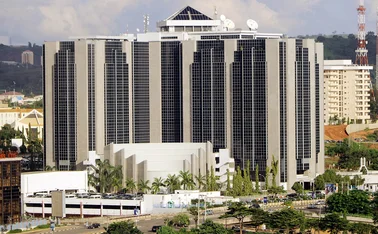
The international monetary ‘anti-system’
A network of systemic risk boards might improve stability

Jacques de Larosière is a former managing director of the IMF and a former governor of the Banque de France. He is president of Eurofi.1
An international monetary system (IMS) is essentially a set of rules that result in the harmonisation of monetary policies of different countries participating in the system. Historically, such systems have relied either on a ‘real’ external anchor, such as gold, or on a national, dominant currency. After the demise of the Bretton Woods system in the early 1970s, central banks eventually adopted an inflation targeting regime. But this regime, although generally applied, has not resulted in a de facto IMS and has failed to bring financial stability to the system. Given present conditions (including the increase in capital movements, innovations in the financial markets, the emergence of new players and the development of a multipolar world), how could a true IMS be conceived?
An IMS tends to harmonise policies
When different countries – varying in terms of their size, productivity and resources – become heavily engaged in cross-border trade, they usually feel the need to use an international currency to facilitate commerce and eliminate continual uncertainty on exchange rates. Economic agents need a currency to help them settle their transactions and store reserves for future needs. This can be an externally based currency such as gold or a dominant national currency as was sterling and later the US dollar, which was chosen to be the anchor of the Bretton Woods system after World War II. In both cases, the existence of a common single yardstick exerted a unifying pressure on national monetary policies. Indeed, if a national central bank was tempted to reduce its interest rate excessively, or to issue ‘too much’ money (in relation to the policies conducted in the centre), it was quickly brought back to a more ‘common’ and compatible monetary stance by the rules of the system. Either gold would leak out of the more accommodating country, or its currency would be pushed into devaluation, which was monitored and restricted under a fixed exchange rate system such as Bretton Woods.
Changes in external imbalances are fundamentally determined by the variations of net domestic assets of a country’s financial balance sheet (i.e. credit extended to the economy and to the state). Therefore, any IMS results in the enforcement of a common monetary policy by national states belonging to it as it has to follow the rules of ‘the system’. That policy is influenced by the quantity of the stock of monetary gold and by the monetary stance followed by the centre. Of course, some countries might not enforce the rules nor respect the discipline of the IMS. But, in that case, these ‘outer’ players could not benefit from the advantages gained from the convertibility of their currencies, while potential capital inflows would be deterred by uncertainty about their national exchange rate.
In a way, one could say that a proper IMS is, in fact, a cluster of individual monetary policies pursued in such a way as to be compatible with the stability characteristics inherent in the system.
Inflation targeting has failed
Since the demise of the Bretton Woods system, there has been no proper IMS able to harmonise monetary policies. With the unilateral US decision to sever the link between the dollar and gold in 1971, central banks had, seemingly, regained freedom in their approach to monetary policy. Many economists thought, for a time, that through a floating exchange rate system, central banks would be able more easily to reach their national goals of monetary stability and growth. In fact, the discipline of the IMS anchor disappeared with nothing to replace it. The result was easy money, more inflation and more exchange rate volatility. Of course, national monetary stances varied from one country to another. These differences led to payment imbalances and large capital movements. The inflation of the 1970s cannot be understood without taking into account the breakdown of Bretton Woods.
Since then, key currencies have been floating. After a decade of high volatility and inflation in the 1970s, the period of the ‘Great Moderation’ began in the 1980s after the Federal Reserve, led by Paul Volcker, had squeezed out inflation expectations. Productivity gains stemming from technological changes and central bank independence were also important factors. However, during the 1990s, the Great Moderation became to some extent an illusion. Much of the reduction in inflation was the consequence of low wages contained in emerging market exports. In fact, monetary policy of the advanced countries was too loose, with real interest rates hovering around zero.2 The explosion of credit and of leverage – encouraged by those low interest rates, deregulation and persistent external imbalances, as well as by an inappropriately exclusive single monetary tool, ‘inflation targeting’ – led to a rapid expansion of credit and the money supply in the run-up to the 2007–08 crisis. All this did not amount to a system; there was no common discipline applied to reduce external imbalances. Each country was free to float or peg its currency; and the role of the dollar, as the primary international currency, gave the Federal Reserve a predominant influence on world monetary conditions.
The result of such a situation was volatility, persistent imbalances, disorderly capital movements, currency misalignments and, eventually, currency wars and a move to apply capital controls. If one reflects on the monetary setting of these last 15–20 years, one cannot simply conclude that it was a ‘non-system’. It was actually much worse: it amounted to an ‘anti-system’.
It is an anti-system as when countries are free to peg their currency to another (or to peg partially) to preserve their competitive advantage, the system is bound to run into problems. Systematic intervention in foreign exchange markets by creditor countries contributed to increased world liquidity and lower interest rates, thus encouraging a massive over-leveraging of the financial system.
So we had an anti-system: central banks focused exclusively on a misleading yardstick (ex-post CPI targeting) while they turned a blind eye to the massive and artificial expansion of credit, to the formation of huge asset price bubbles3 and to the new mindset in which liquidity was understood as access to credit. And there was no interest in multilateral surveillance of macroeconomic policies. Imbalances were huge and structural. But as they were financed more and more smoothly with the help of innovative financial products, there was no pressure on governments to correct them: why bother? This eventually led to the 2007–08 crisis that is threatening the very fabric of our societies.
What hope for a true IMS?
Does the present world offer a realistic hope for a proper functioning of the international monetary system? By ‘present world’, I mean a set of conditions where there is not likely to be a return to a form of global standard or to a stable exchange rate mechanism in the foreseeable future; and where freedom of capital movements, and the importance of liquidity in financial markets (essentially in the US) are a key determinant for the success of international currencies. This is a world composed of states determined to preserve their own interests (or what they believe to be their interests) without having to accept external constraints. In sum: a world of national objectives.
If we want to imagine what would be involved in reconstructing a true international monetary system, then this final factor, at least, must change. Indeed, the word ‘system’ implies the acceptance of an element of externally agreed consistency. The juxtaposition of national positions cannot, by definition, amount to a system. Nations would therefore have to accept that they must coordinate their economic and financial policies to achieve a sustainable global macroeconomic balance, under the surveillance of an international institution disposing of adequate powers and sanctions. If the International Monetary Fund were chosen to fulfil such a role, its governance would have to reflect better the real world, and particularly the growing importance of emerging countries.
This, in theory, could be an attainable objective as long as states are ready to convince themselves that the common discipline they would have to abide by is not only desirable internationally, but is also in their own interest. Indeed, in a financially globalised world, exchange rate volatility, currency misalignments and structural deficits are in no-one’s interest. But, in the present circumstances, the probability of common macroeconomic governance with constraints on member countries’ policies seems to be very remote. Sociological empirical studies have demonstrated that the rise of risks tend to weaken cooperative arrangements: some players are tempted to join more limited groups or follow individual strategies. Less international cooperation and more competition are usually the result of greater turmoil and uncertainty.
Efforts to improve the anti-system
In an attempt to counter these threats from a reduction in cooperation, several technical adjustments can be envisaged to the present anti-system. Some proposals envisage an increase in financing facilities provided by the IMF; indeed, the G-20 countries have already reinforced the Fund’s resources and made their use more flexible. But some argue this is not enough and that the IMF should be allowed to provide last-resort funding to countries affected by a liquidity crisis (not by solvency problems that are usually linked to inadequate economic policies). To that effect, they propose that the IMF should be allowed to borrow on the markets and to substitute or complement central banks’ swap lines, the provision of which is often uncertain and therefore not adequate to prevent looming crises. Other ideas envisage an extension of the role of the special drawing right (SDR). But it is highly improbable that the SDR could become a substitute for the dollar. Besides, it should not be used as a form of multilateral guarantee for countries having accumulated excess reserves. At any rate, in relation to the size of financial markets, the potential offered by the SDR seems weak.
Moreover, the fundamental flaws of the current arrangements would remain i.e. unilateral monetary policies implemented by the largest financial centres without any concern about their international consequences (as we can see with the present ‘tapering’ of the US Federal Reserve’s policies of quantitative easing) and the absence of any macroeconomic coordination. In such conditions, it seems to me that such possible technical adjustments to the Fund’s present procedures – even if fully implemented – would not adequately address the real issues.
Problems of a multi-polar system
Given the low probability of a ‘grand’ reform of the international monetary system, the world is likely to evolve slowly over the years towards a more multi-polar system. The rise of China, India and Brazil is a powerful factor of change. Monetary power must eventually match economic influence as it has done throughout history. We are already seeing the harbingers of such a transition: domestic currencies of emerging markets are being used more and more in local and regional transactions, non-residents are beginning to have access to emerging currency pools, emerging financial markets are gradually expanding and issues of bonds denominated in emerging currencies are developing on international markets. These changes will take time before they translate into universal convertibility. But the direction is clear: more currencies will participate in international finance.
But such a transition will not solve all the problems left behind by the absence of a true IMS. The financial crisis was fuelled by excessive credit expansion. Too much bank leverage contributed to the explosion of the money supply – and monetary policy limited to inflation targeting (but not concerned with over-leveraging and asset price bubbles) was powerless. To avoid the repetition of such crises in a world where currencies look likely to continue to be free to misalign, another approach seems essential: macroeconomic oversight. Central banks and regulators from around the globe must work together to both identify and counter financial imbalances. If, for example, real estate borrowing becomes excessive in a particular country, regulators should react by setting limits on loan-to-value ratios. Or, if credit bubbles threaten, then monetary policy should respond by increasing interest rates or by other measures such as raising reserve requirements or introducing countercyclical provisioning.
If the present mushrooming network of systemic risk boards could work together to foster this fine-tuning of monetary and regulatory measures – to be applied not uniformly across the board, but according to the problems of each country – then we could improve stability. The absence of an international monetary system could, to a certain extent, be mitigated by a serious macroeconomic oversight regime. It is true that governments might not be willing to apply countercyclical policies, which tend to be unpopular in ‘good times’. But central banks and regulators may perhaps have more leeway and independence to apply the brakes to a boom if necessary. I would add also that capital requirements are not the only way of fostering resilience; indeed, increasing global headline capital ratios can be very costly in terms of reducing normal credit availability. Sectoral and cyclical capital requirements and lending limits would be more effective and less expensive than a ‘one size fits all’ capital ratio approach. Systemic attention to risk seems to be the persistent missing link of our prevailing mindset.
Notes
1. This article is based on a speech given at a conference, ‘Bretton Woods @ 70’, organised by the National Bank of Austria and the Reinventing Bretton Woods Committee, February 2014.
2. Fed fund rates were negative in real terms from August 2002 to February 2005.
3. Real house prices rose by more than 70% in the years 1996–06. Income and population growth in this period would not have warranted any extraordinary increase in demand. (see Dean Baker ‘International Economy’, autumn 2013).
Only users who have a paid subscription or are part of a corporate subscription are able to print or copy content.
To access these options, along with all other subscription benefits, please contact info@centralbanking.com or view our subscription options here: http://subscriptions.centralbanking.com/subscribe
You are currently unable to print this content. Please contact info@centralbanking.com to find out more.
You are currently unable to copy this content. Please contact info@centralbanking.com to find out more.
Copyright Infopro Digital Limited. All rights reserved.
As outlined in our terms and conditions, https://www.infopro-digital.com/terms-and-conditions/subscriptions/ (point 2.4), printing is limited to a single copy.
If you would like to purchase additional rights please email info@centralbanking.com
Copyright Infopro Digital Limited. All rights reserved.
You may share this content using our article tools. As outlined in our terms and conditions, https://www.infopro-digital.com/terms-and-conditions/subscriptions/ (clause 2.4), an Authorised User may only make one copy of the materials for their own personal use. You must also comply with the restrictions in clause 2.5.
If you would like to purchase additional rights please email info@centralbanking.com








